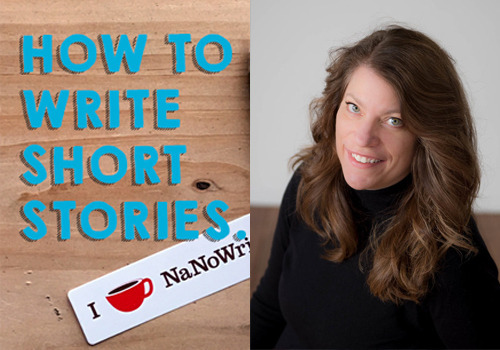Author Interview: Storytelling is part of the human DNA

We’re partnering with StoryADay for Short Story Month this May, the perfect opportunity to track a new NaNoWriMo goal, or start a new Young Writers Program personal challenge. Today, author Tory Christie shares her advice to questions from Julie Duffy at StoryADay:
Q: How do I make readers care about my story and my characters?
A: Empathy is the key to making readers care about your story and your characters. Empathy is the ability to understand the feelings of another person (or animal).
I like to establish some empathy right away, in the first scene. Better yet, on the first page. Show your character caring about someone else.
In one of my stories, my main character sticks up for the new girl in town during the first scene. It can even be a very small gesture, like letting your character find a penny on the road and handing it to a little sister. Or maybe your main character picks up a worm on the sidewalk and moves it safely into the grass.
Another way to make readers care about your character is to make your reader identify with your character. For example, give your character a trait (or feelings) that most fourth graders would identify with (or tenth graders or whoever your audience happens to be).
Here are some examples that any kids might relate to: she thinks that she’s just average and wants to be special, he’s nervous about the first day of school, she is worried that her friends will make fun of her new haircut, he is excited about the school dance, she’s grossed out by the school lunch. You get the idea.
Just give it a try!
Q: How detailed is your outline before you start writing?
A: I love outlining! But, everyone is different.
I usually write a few pages or chapters first to establish the character and voice. Then I go back and create a detailed outline.
But for my chapter book series, Curious McCarthy, I know my characters really well—all nine family members! So I will start with a spark of an idea and then work up a detailed outline that will include a paragraph detailing the scenes in each chapter.
My final outline is about one and a half to two pages of single spaced text, so that’s pretty detailed for a chapter book.
For non-fiction, I always outline, but I finish the glossary and back-matter first, because it is an easy way to start my research. I learned this tip from my friend, Elizabeth Raum, who has written over 100 children’s books!
Writing Dare from Tory ChristieScientists and writers are both trained observers. Make note of little gestures, subtle movements, and minor details you see during the day. Sometimes noticing these little things make the best stories.
Then, write a story about a character who is having a hard time telling fact from fiction.
Tory Christie is a scientist by day, working as both a geologist and hydrologist. She also writes children’s books about science, technology, and nature. When it is light outside, she studies rocks and water and the rest of the environment. After dark, she writes silly science stories that kids and adults can laugh about. Her latest series follows the life of Curious McCarthy, a little girl who desperately wants to be a scientist, but is just not sure how to go about it. Tory Christie lives in Fargo, North Dakota.
Chris Baty's Blog
- Chris Baty's profile
- 62 followers



